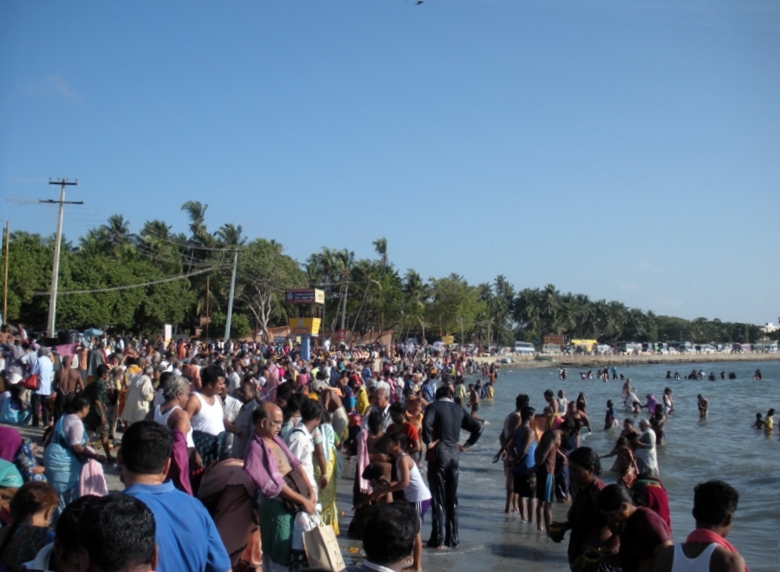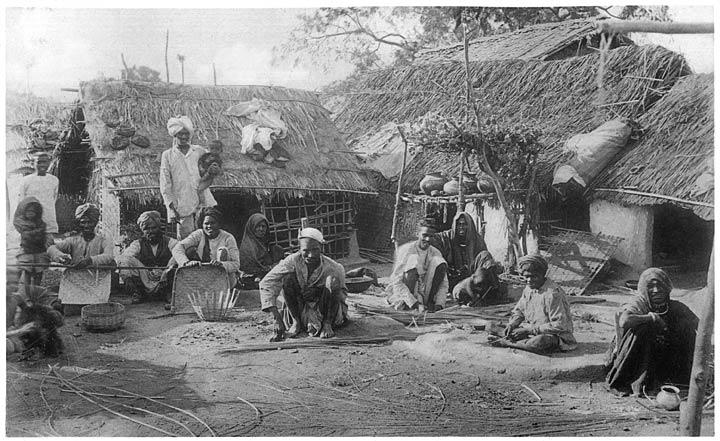|
Singai-Aryan
The Arya Chakravarti dynasty (, Sinhalese language, Sinhalese: ආර්ය චක්රවර්තී රාජවංශය) were kings of the Jaffna Kingdom in Sri Lanka. The earliest Sri Lankan sources, between 1277 and 1283, mention a military leader of this name as a minister in the services of the Pandyan Empire; he raided the western Sri Lankan coast and took the politically significant relic of the Gautama Buddha, Buddha's tooth from the History of Sri Lanka, Sinhalese capital city of Yapahuwa. Political and military leaders of the same family name left a number of inscriptions in the modern-day Tamil Nadu state, with dates ranging from 1272 to 1305, during the late Pandyan Empire. According to contemporary native literature, such as ''Cekaracecekaramalai'', the family also claimed lineage from the Iyer, Tamil Brahmins of the prominent Hindu pilgrimage temple of Ramanathaswamy Temple, Rameswaram, Rameswaram in the modern Ramanathapuram District of India. They ruled t ... [...More Info...] [...Related Items...] OR: [Wikipedia] [Google] [Baidu] |
Sri Lanka
Sri Lanka, officially the Democratic Socialist Republic of Sri Lanka, also known historically as Ceylon, is an island country in South Asia. It lies in the Indian Ocean, southwest of the Bay of Bengal, separated from the Indian subcontinent, Indian peninsula by the Gulf of Mannar and the Palk Strait. It shares a maritime border with the Maldives in the southwest and India in the northwest. Sri Jayawardenepura Kotte is the legislative capital of Sri Lanka, while the largest city, Colombo, is the administrative and judicial capital which is the nation's political, financial and cultural centre. Kandy is the second-largest urban area and also the capital of the last native kingdom of Sri Lanka. The most spoken language Sinhala language, Sinhala, is spoken by the majority of the population (approximately 17 million). Tamil language, Tamil is also spoken by approximately five million people, making it the second most-spoken language in Sri Lanka. Sri Lanka has a population of appr ... [...More Info...] [...Related Items...] OR: [Wikipedia] [Google] [Baidu] |
Ramanathaswamy Temple, Rameswaram
Ramanathaswamy Temple (''Rāmanātasvāmi Kōyil'') is a Hindu temple dedicated to the Hindu god Shiva located on Rameswaram island in the state of Tamil Nadu, India. It is one of the twelve Jyotirlinga temples. It is one of the 275 Paadal Petra Sthalams, the sacred sites glorified by the Nayanars (Shaivite poet-saints), Appar, Sundarar, and Sambandar, with their songs. According to tradition, the ''lingam'' (an aniconic form of Shiva) of the Ramanathaswamy Temple was established and worshipped by Rama before he crossed the bridge called Rama Setu to the island kingdom of Lanka, identified with Sri Lanka. It is one of the Char Dham pilgrimage sites. The temple was expanded during the 12th century by the Pandya Dynasty, and its principal shrine’s sanctum was renovated by Jeyaveera Cinkaiariyan and his successor Gunaveera Cinkaiariyan, monarchs of the Jaffna kingdom. The temple has the longest corridor among all the Hindu temples of India. It was built by King Muthuram ... [...More Info...] [...Related Items...] OR: [Wikipedia] [Google] [Baidu] |
Warlord
Warlords are individuals who exercise military, Economy, economic, and Politics, political control over a region, often one State collapse, without a strong central or national government, typically through informal control over Militia, local armed forces. Warlords have existed throughout much of history, albeit in a variety of different capacities within the political, economic, and social structure of State (polity), states or Anarchy, ungoverned territories. The term is often applied in the context of China around the end of the Qing dynasty, especially during the Warlord Era. The term may also be used for a General officer, supreme military leader. Historical origins and etymology The first appearance of the word "warlord" dates to 1856, when used by American philosopher and poet Ralph Waldo Emerson in a highly critical essay on the aristocracy in England, "Piracy and war gave place to trade, politics and letters; the war-lords'' to the law-lord; the privilege was kept, ... [...More Info...] [...Related Items...] OR: [Wikipedia] [Google] [Baidu] |
Primary Source
In the study of history as an academic discipline, a primary source (also called an original source) is an Artifact (archaeology), artifact, document, diary, manuscript, autobiography, recording, or any other source of information that was created at the time under study. It serves as an original source of information about the topic. Similar definitions can be used in library science and other areas of scholarship, although different fields have somewhat different definitions. In journalism, a primary source can be a person with direct knowledge of a situation, or a document written by such a person. Primary sources are distinguished from ''secondary sources'', which cite, comment on, or build upon primary sources. Generally, accounts written after the fact with the benefit of hindsight are secondary. A secondary source may also be a primary source depending on how it is used. For example, a memoir would be considered a primary source in research concerning its author or about ... [...More Info...] [...Related Items...] OR: [Wikipedia] [Google] [Baidu] |
Brahmin
Brahmin (; ) is a ''Varna (Hinduism), varna'' (theoretical social classes) within Hindu society. The other three varnas are the ''Kshatriya'' (rulers and warriors), ''Vaishya'' (traders, merchants, and farmers), and ''Shudra'' (labourers). The traditional occupation of Brahmins is that of priesthood (purohit, pandit, or pujari) at Hindu temples or at socio-religious ceremonies, and the performing of rite of passage rituals, such as solemnising a wedding with hymns and prayers.James Lochtefeld (2002), Brahmin, The Illustrated Encyclopedia of Hinduism, Vol. 1: A–M, Rosen Publishing, , page 125 Traditionally, Brahmins are accorded the supreme ritual status of the four social classes, and they also served as spiritual teachers (guru or acharya). In practice, Indian texts suggest that some Brahmins historically also became agriculturalists, warriors, traders, and had also held other occupations in the Indian subcontinent.GS Ghurye (1969), Caste and Race in India, Popular Prakasha ... [...More Info...] [...Related Items...] OR: [Wikipedia] [Google] [Baidu] |
Tamil Language
Tamil (, , , also written as ''Tamizhil'' according to linguistic pronunciation) is a Dravidian language natively spoken by the Tamil people of South Asia. It is one of the longest-surviving classical languages in the world,. "Tamil is one of the two longest-surviving classical languages in India" (p. 7). attested since 300 BC, 300 BCE.: "...the most acceptable periodisation which has so far been suggested for the development of Tamil writing seems to me to be that of A Chidambaranatha Chettiar (1907–1967): 1. Sangam Literature – 200BC to AD 200; 2. Post Sangam literature – AD 200 – AD 600; 3. Early Medieval literature – AD 600 to AD 1200; 4. Later Medieval literature – AD 1200 to AD 1800; 5. Pre-Modern literature – AD 1800 to 1900" at p. 610 Tamil was the lingua franca for early maritime traders in South India, with Tamil inscriptions found outside of the Indian subcontinent, such as Indonesia, Thailand, and Egypt. The language has a well-documented history wit ... [...More Info...] [...Related Items...] OR: [Wikipedia] [Google] [Baidu] |
Maravar
Maravar (also known as Maravan and Marava) are a Tamil community in the state of Tamil Nadu. These people are one of the three branches of the Mukkulathor confederacy. Members of the Maravar community often use the honorific title '' Thevar''. They are classified as an Other Backward Class or a Denotified Tribe in Tamil Nadu, depending on the district. The Sethupathi rulers of the erstwhile Ramnad kingdom were from this community. The Maravar community, along with the Kallars, had a reputation for thieving and robbery from as early as the medieval period. Etymology The term ''Maravar'' has diverse proposed etymologies; it may come simply from a Tamil word ''maram'', meaning such things as ''vice'' and ''murder''. or a term meaning "bravery". Social status The Maravars were considered as Shudras and were free to worship in Hindu temples. According to Pamela G, Price, the Maravar were warriors who were in some cases zamindar A zamindar in the Indian subcontinent ... [...More Info...] [...Related Items...] OR: [Wikipedia] [Google] [Baidu] |
Caste
A caste is a Essentialism, fixed social group into which an individual is born within a particular system of social stratification: a caste system. Within such a system, individuals are expected to marry exclusively within the same caste (endogamy), follow lifestyles often linked to a particular occupation, hold a ritual status observed within a hierarchy, and interact with others based on cultural notions of social exclusion, exclusion, with certain castes considered as either more pure or more polluted than others. The term "caste" is also applied to morphological groupings in eusocial insects such as ants, bees, and termites#caste, termites. The paradigmatic ethnographic example of caste is the division of India's Hinduism, Hindu society into rigid social groups. Its roots lie in South Asia's ancient history and it still exists; however, the economic significance of the caste system in India seems to be declining as a result of urbanisation and affirmative action programs. ... [...More Info...] [...Related Items...] OR: [Wikipedia] [Google] [Baidu] |
Maaravaramban Kulasekara Pandyan I
Maravarman Kulasekara Pandyan I () was a Pandyan emperor who ruled regions of South India between 1268–1308 CE, though history professor Sailendra Sen states he ruled until 1310. In 1279 CE, Maravarman Kulasekara Pandyan ended the rule of Chola dynasty by defeating Rajendra III of Cholas and Ramanatha of Hoysalas. His death lead to the Pandyan Civil War in 1308–1323. Accession and shared rule Kulasekara Pandyan I acceded to the Pandyan throne in the year 1268 CE after his father Jatavarman Sundara Pandyan I. During the middle part of the 13th century, the kingdom was ruled by many princes of the royal line. This practice of shared rule with one prince asserting primacy was common in the Pandyan Kingdom. The other princes of the royal family with whom he shared his rule were Jatavarman Vira Pandyan I (1253-1275 CE), his brother Maravarman Vikkiraman III (acceded 1283 CE) and Jatavarman Sundara Pandyan II (acceded 1277 CE). Marco Polo refers to him as the "eldest of f ... [...More Info...] [...Related Items...] OR: [Wikipedia] [Google] [Baidu] |






